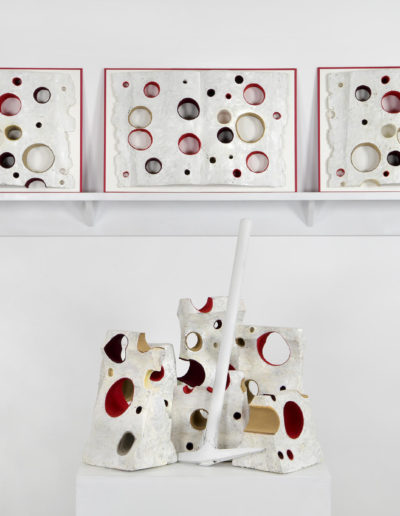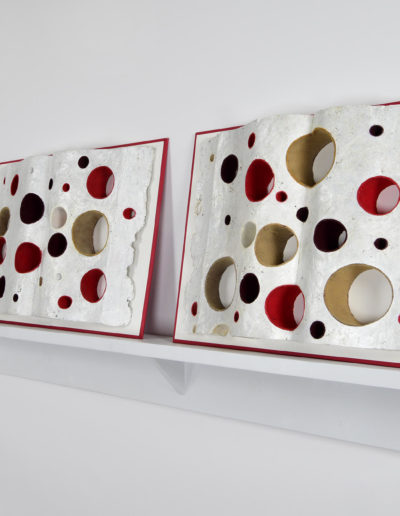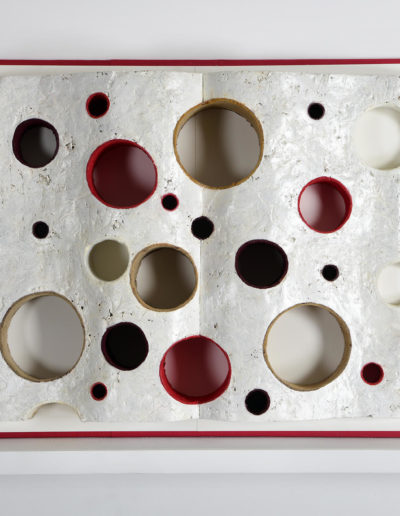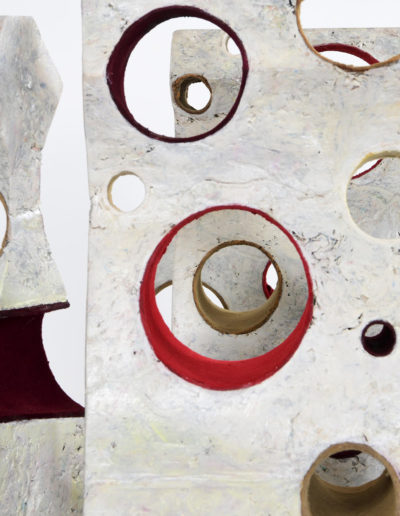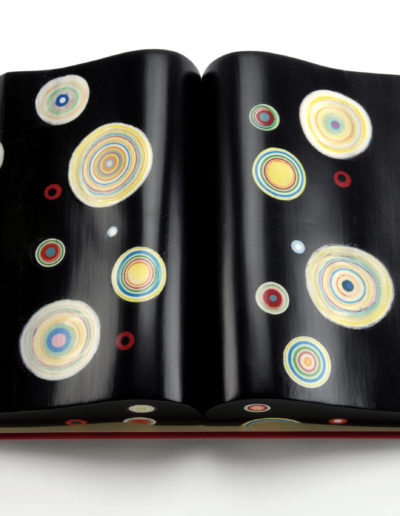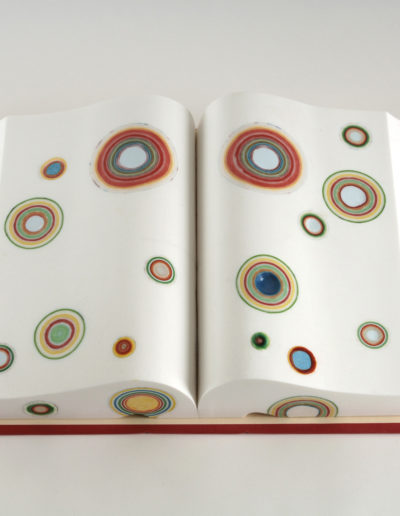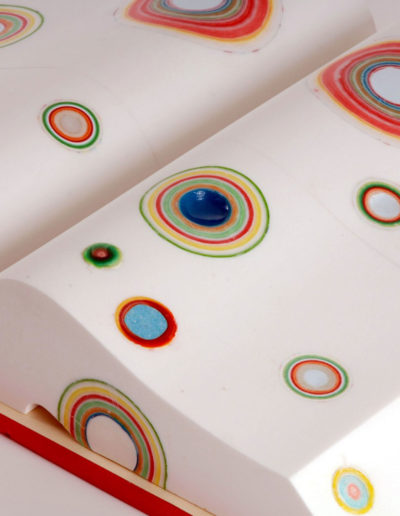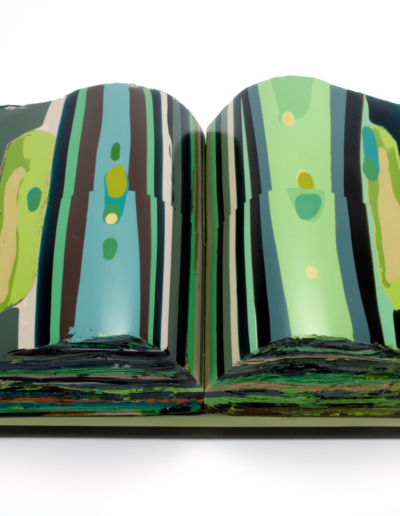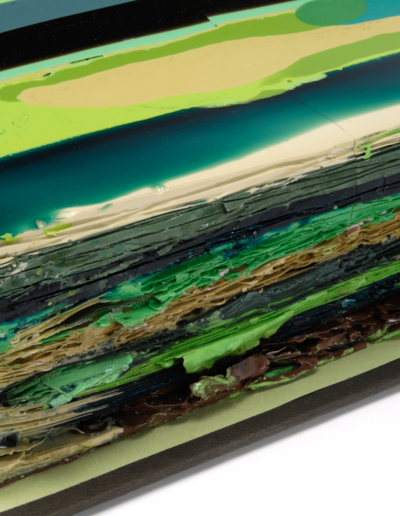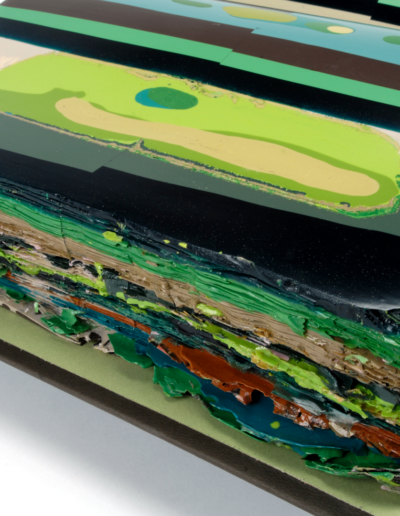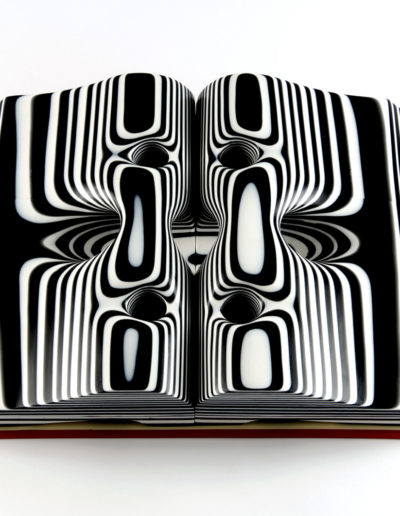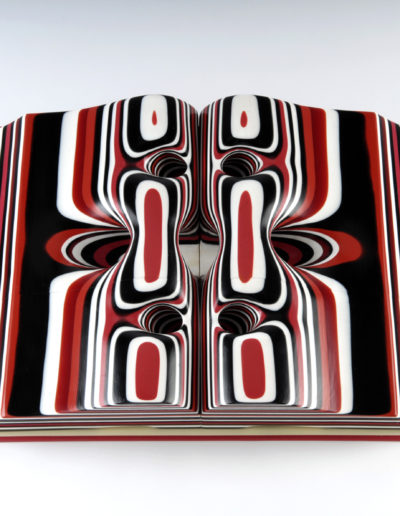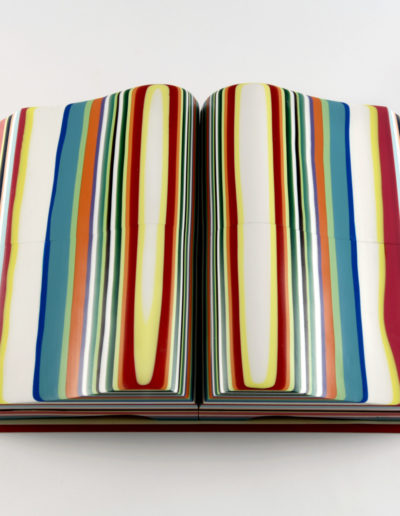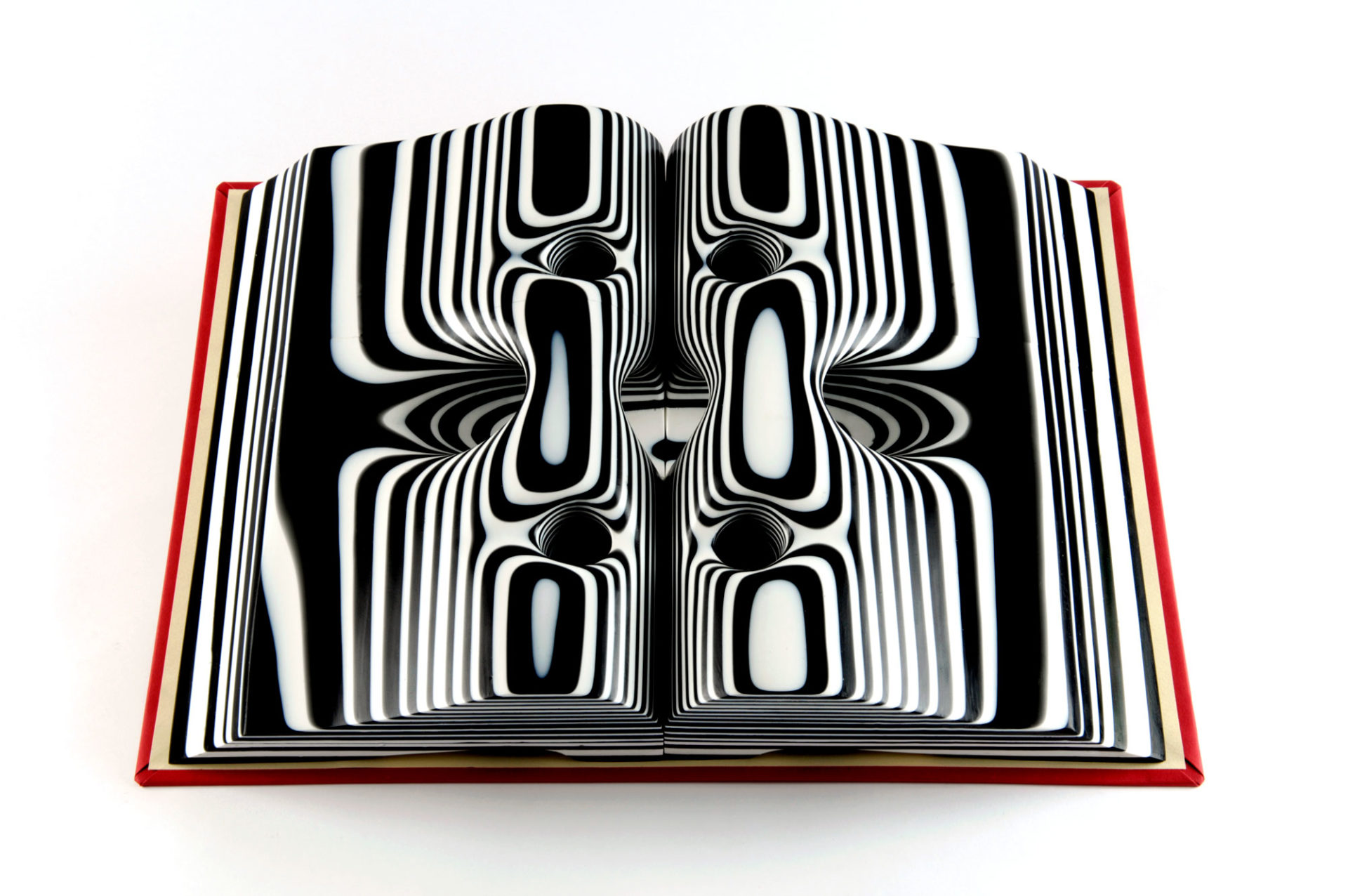
Books
The book, defined as a stack of pages bound between covers, first appeared in the first century. Despite the modern proliferation of electronic reading devices, there continues to be a desire to connect with and embrace the original object, leading one to conclude that reports of its death are greatly exaggerated. As a voracious reader, I have long been intrigued by all kinds of books, both as objects of sculptural beauty and as embodiments of intellectual inspiration and literary mastery.
As works of art, my books draw inspiration from a long line of artists who have also found in the concept and form of the book great fodder for their work, amongst whom Ed Ruscha stands out. His paintings and sculptures of books are impressively outsized and inviting. His large renderings of books, some of which are blank, show the weathered vestiges of age, worm holes, stains, and the like. They stand as an invitation for closer inspection, daring the viewer to dive into a more intimate relationship with the revealed page and its history. My book series, while taking a different aesthetic tack, aims to similarly inspire, both honoring the medium and bringing the viewer into further close reading and appreciation of the icon. The sculptures, which are constructed of various materials, depending on the piece, stand as compelling aesthetic symbols of the journey of reading; an open book is a portal to a world of enrichment and empowerment.
Perhaps no piece better exemplifies my sensibilities as an artist better than History of Digging, Rooting, and Mining. My process, as in all of my art, is one of excavation to reveal hidden depths, both formally and conceptually. In this piece, that exploratory process takes the viewer through the original “quarry” of materials: my own artist notes and sketches which have been shredded and compacted, in order to subsequently carve out the three tomes. Via the colorful, drusy-like cavities in the material, the viewer accesses an aspect of the world that is framed by that journey down and through. In the resin-based pieces, the dizzying imagery invites the reader into a new kind of book learning with a visual, physical, and visceral depth.

